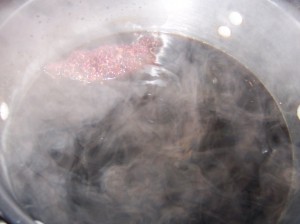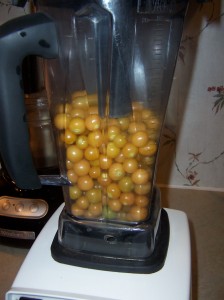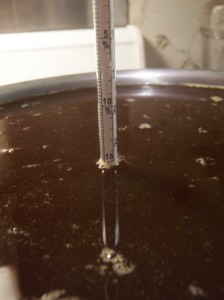For a while now, I’ve been wondering what a tomato mead would be like. I’ve heard of basil being successful in mead also, so I’ve been imagining what some of these flavors might be in a mead. I haven’t quite had the guts to make a tomato mead though.
Until now.
Husk Cherry (Physalis pruinosa)
Husk Cherry (Physalis pruinosa) is a member of the Physalis family, so it is a nightshade and in the tomato family. P. pruinosa is also sometimes called “Strawberry Groundcherry,” “Cape Gooseberry,” and of course “Husk Cherries” (specifically the “Goldie variety” from the seed supplier). Physalis is most known for the husks that surround the fruit:

The husk cherries definitely have a tomato-ish vibe, but they aren’t nearly as tart or intense as a tomato. The flavor is sweeter and lighter, and the overtones are more like pineapple than tomato. Delicious!
Our CSA Farm (Deri Farm in North Yarmouth Maine) happened to have some extra husk cherries this year, so I grabbed up 2 quarts right away, and made sure the husks were all peeled away (thanks LM for the help!).
I begin this batch basically the same way as Mad Trad D, with a good, strong chaga decoction and a staghorn sumac drupe put it for the last 5 minutes of simmer:

While the tea was cooling, I put the husk cherries into the high speed blender:

They were whizzed up and strained, and added to the cooled, strained tea:

Then, I added enough honey so that it would top off at about 16% alcohol (I’m envisioning a drier mead for this flavor):

The husk cherries didn’t color the final must too much, but it looks beautiful, a nice deep brown that will likely fade as we get into secondary fermentation:

I can’t wait to see how this comes out!
UPDATE: Nov 25
Just racked this mead, it’s beautifully gold in color, with 1% remaining alcohol potential, meaning this brew is 15% alcohol. Very nice flavor! It’s dry but you can definitely taste the husk cherries…..
